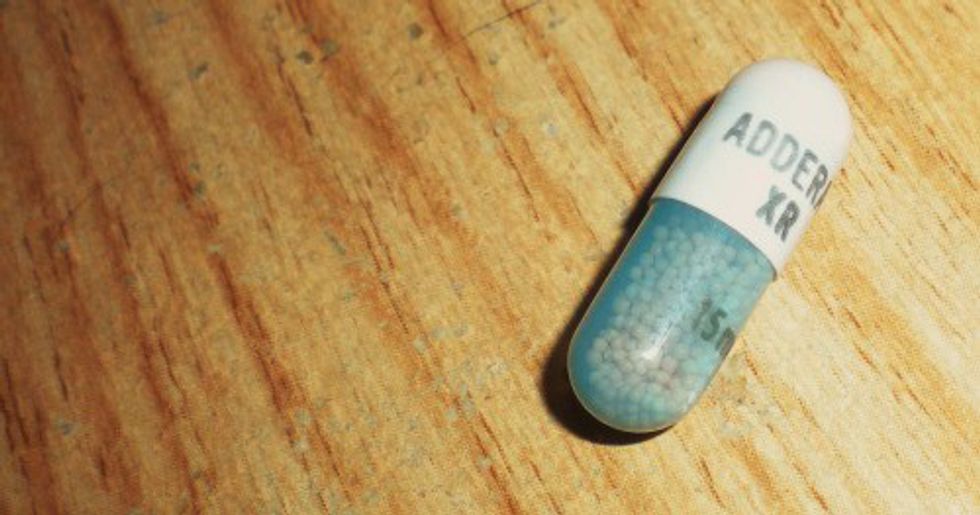Narrative:
Individual one is a traditional undergrad student. Having just entered their program concentration, studies have become exceedingly more rigorous. On top of a dense class schedule, individual one is also working part time to place a dent upon exponentially growing student loans. Exhausted, individual one sits down in the library to begin studying for tomorrow’s exam and write Friday’s upcoming paper. Before opening his or her laptop, individual one, slips two pills out of their pocket, justifying an unequivocal need for full concentration.
Individual two is a freshman in university, having just moved onto campus, he or she is looking to find their niche among the students. Socially, individual two, has categorized the mass of students based upon social tendencies: there are those who smoke pot, those who prefer the “party drugs,” the less common group of those involved in heavier narcotics like heroin and meth and lastly, the less recognized group who depend upon “study drugs.” Having never dabbled among these so called social groups, individual two finds themselves dipping toes into college social life by trying Adderall. After academic success, individual two, buys into the legal drug movement and frequently uses the stimulant to improve their academic performance.
Individual three is an active Adderall dealer on a college campus. As a get-rich-quick fix, he or she began selling the study drug to pay for textbooks and social events. With his or her prescription, they easily sell to other students on campus declaring it as another legal drug. In fact, individual three’s success as a dealer has surpassed expectation with midterms approaching. He or she is now selling a single capsule for $10 a pop- talk about cash flow.
Despite the diversity of drug use on campus, the facts remain the same. Regardless, of the prevalence of drug use, there is a consistent population of those who partake in both legal and illegal drug consumption. Perhaps, some of the best sources for information on drug use on college campuses is provided by American College Health Association’s National College Health Assessment.
While scientific evidence can prove the distribution of drug use on college campuses, it cannot explain the motive behind the increase in prescription drug use in recent years. Many have argued, obtaining a college education has become more difficult than ever before. This is inclusive of the academic, societal and nonetheless financial pressure college presses upon student life. As Mark Twain once put it, "Necessity is the mother of taking chances" and college lives up to nothing short of this.
The stimulant study drug known as Adderall has simply become this generations both coping mechanism and key to success in university education. The recreational use of the legal prescription drug is no longer seen as taboo and is widely accepted as a necessity among students. Those who hold the legal prescription have struck the studying goldmine and those who do not, will likely find a source to share in this resource as well.
Drug use is viewed more as practicality as students feel pressure to academically compete. The daily life of a college student is cramped full of distractions that deter them from devoutly studying. Existential pressure from social media, the necessity to work and the stress of simply maintaining a household are all factors which can have an effect upon academic success. Adderall provides a temporary solution to this debacle as a tangible method to focus. Realistically, Adderall poses less of a threat, despite its addictive qualities and often illegal mode of accumulation, opposed to other drugs.
So how does the discussion of Adderall on college campuses differ as its use becomes more widely accepted? Opportunity for a new enterprise rises- Simply put, those who choose to use drugs or rely upon them, will find modes of obtaining them. In translation, students who do not hold legal prescriptions, will find students who do or dealers which are willing to share in the trade. Consequently, the legal drug takes a mode of illegal distribution, but the result remains the same.
In context, Adderall is traditionally prescribed for those with Attention Deficit Hyperactivity Disorder. However, it is seemingly becoming morecommonly known as a token mechanism to simply focus. Perhaps, the future holds a system where students are able to legally obtain a prescription for studying purposes where their consumption is monitored similar to someone who receives the prescription for ADHD. Thiscould, potentially reduce the number of individuals who struggle with addiction to the stimulant and illegal modes of distribution. Why not take a college commodity and turn it into a legal taxable enterprise?
Since 2012, when I-502 was passed regarding the legalization of marijuana in Washington State, data has been collected following the community’s response. The 2015 status report from the organization Drug Policy determined, "statewide, violent crime declined by 10% between 2011 and 2014, including a 13% decrease in the murder rate. During the same period, burglaries decreased by 6%, and overall property crime rates remained steady across the state." Moreover, with legalization came a decreased crime rate as a communally positive affect. But how did the legalization of marijuana affect youth populations? Could I-502 be a pilot example for potential legalization of Adderall as a study drug?The organization noted, "there were no new significant trends in youth marijuana use." Therefore, those who did not use before did not consciously make a decision to use based upon its legalization. In translation, this could be used as relevant data to explain a possible trend with a legalization of Adderall. Students who chose to use Adderall for studies would continue to use, however, with legal consumption and those who did not previously, would continue to fall in this pattern.
As many have joked before, the diet of a college student relies upon coffee and Adderall. Yet, one of these substances may be obtained illegally. Ultimately, the question posed upon us now is whether it is ethical to turn Adderall into a legal distribution enterprise as a studying tool? Is the legalization of marijuana in states such as Washington and Colorado, significant evidence to determine a communal response to the stimulant Adderall? Or, is the legalization of a narcotic, relevant to legalization of a prescription stimulant for an alternative intended use?











































